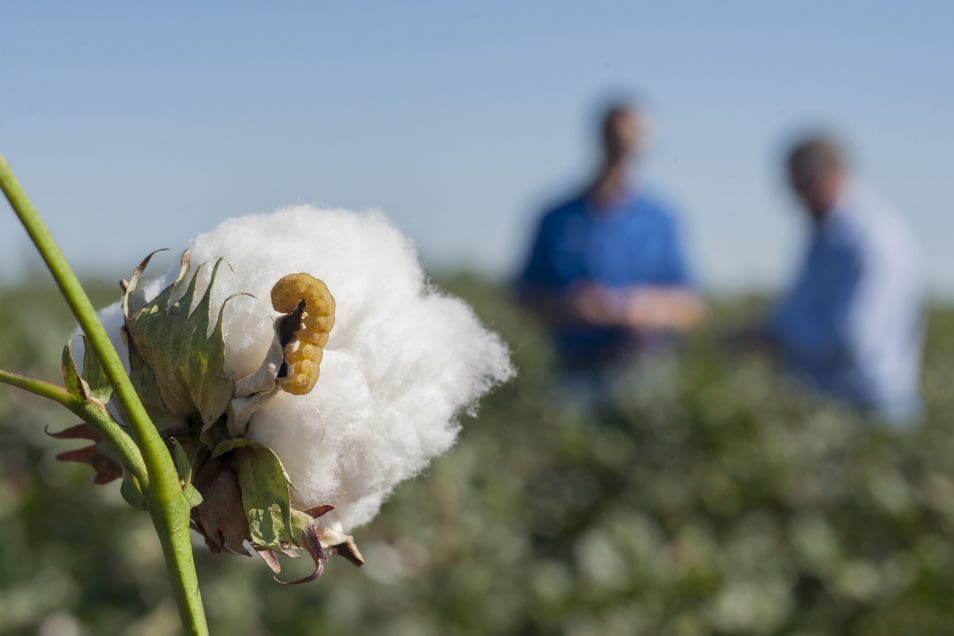
Resistance to cotton bollworm (Helicoverpa armigera) is being controlled in Australia through world-leading strategies.
WIDESPREAD resistance by the cotton bollworm pest to the Bt toxins that have been bred into current cotton varieties in some regions of the world is causing concern for Australian growers.
But, CSIRO principal research scientist, Sharon Downes, who has been tracking resistance by cotton bollworm to Bt cotton in Australia for over 15 years, says Australia’s world-leading strategies for managing Bt cotton have prevented the spread of resistance in Australian crops.
“Despite detecting relatively high starting levels of resistance in the insects in Australia to two of the three toxins that are in the current types of Bt cotton, the resistance hasn’t spread to date,” she said.
Dr Downes attributes this to the robust strategies that she developed with colleagues and industry stakeholders which obliged Australian cotton growers to steward Bt cotton since it was introduced in the mid-1990s.

CSIRO principal research scientist, Sharon Downes, has been tracking resistance by cotton bollworm to Bt cotton in Australia for over 15 years.
She said the strong communication and social networks across the Australian cotton industry had also been critical for enacting good stewardship and thwarting resistance.
For several years, Dr Downes has been working with the cotton industry in Australia to better manage the key insect pests which reduce yields.
The majority of cotton varieties now grown in Australia are Bt cotton which have in-built protection against their major nemesis, the cotton bollworm, and have reduced pesticide use by at least 85 per cent.
One of the strategies cotton growers use to ward off resistance is to set aside refuge areas among their crops where they grow cotton plants that don’t have in-built toxins.
In these areas, susceptible insects (i.e. those that are not affected when they eat the toxins) are able to thrive.
This strategy has a muting effect on resistance because the resistant insects interbreed with susceptible insects.
The impact of preserving susceptibility to Bt cotton is that there is almost no need to apply insecticide sprays to control the cotton bollworm in this crop.
This has the flow on effect of also preserving beneficial insects, like spiders and parasitoids (insects whose larvae kill their hosts), which can further help to control the bollworm and a range of other crop pests.
Attempts to wipe out all pests will not help with the problem of resistance. These approaches undermine the benefits received from nature.
In the fight against resistance there is a need to actually build up the number of insects that are susceptible to pesticides.
Source: CSIRO

HAVE YOUR SAY